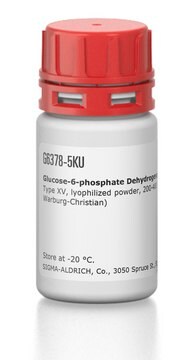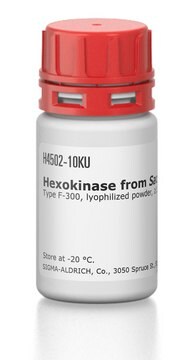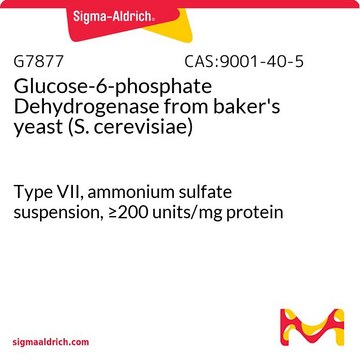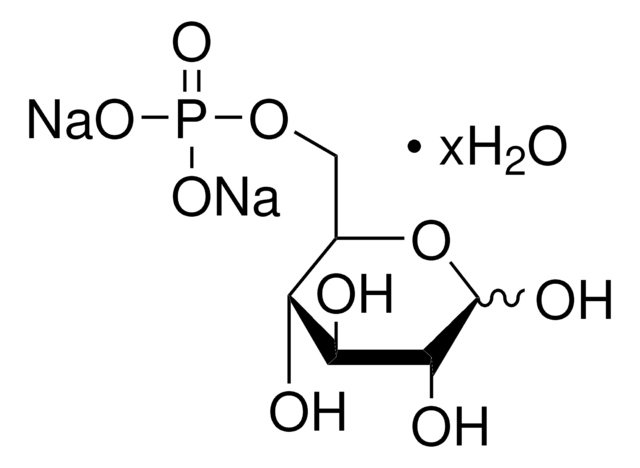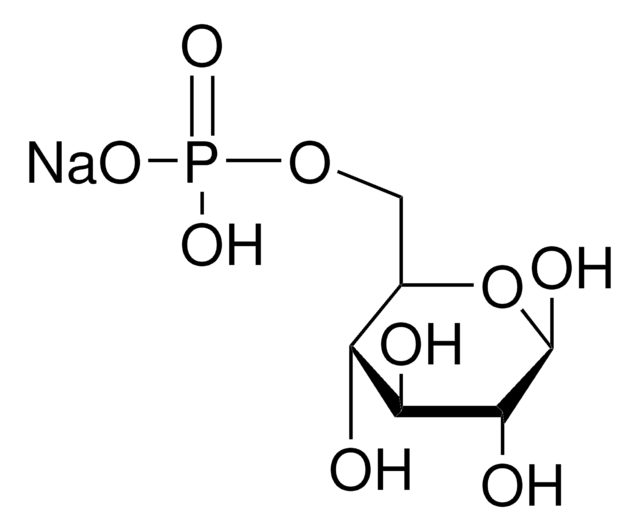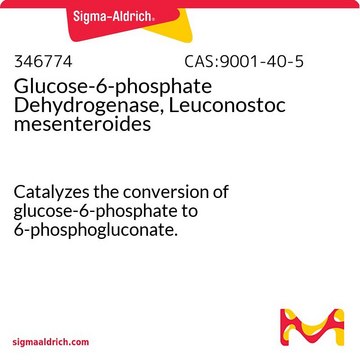G4134
Glucose-6-phosphate Dehydrogenase from baker′s yeast (S. cerevisiae)
Type IX, lyophilized powder, 200-400 units/mg protein (modified Warburg-Christian)
Synonym(s):
G-6-P-DH, Zwischenferment
About This Item
Recommended Products
type
Type IX
Quality Level
form
lyophilized powder
specific activity
200-400 units/mg protein (modified Warburg-Christian)
mol wt
128 kDa
β-NADP and β-NADPH content
≤10 mmol/mol
application(s)
agriculture
shipped in
dry ice
storage temp.
−20°C
Looking for similar products? Visit Product Comparison Guide
Related Categories
General description
Glucose-6-phosphate dehydrogenase (G6PD) is a key metabolic enzyme of the pentose phosphate pathway. In S. cerevisiae, it is encoded by the ZWF1 gene. G6PD exists as a tetramer in its active form.
Application
- To test ketose reductase activity in developing maize endosperm.
- For recycling microassay of β-NADP and β-NADPH.
- To measure the intracellular levels of NADPH and total NADP.
- To measure the nicotinamide adenine dinucleotide (NAD) kinase kinetic assay activity.
Biochem/physiol Actions
Unit Definition
Physical form
Signal Word
Danger
Hazard Statements
Precautionary Statements
Hazard Classifications
Resp. Sens. 1
Storage Class Code
11 - Combustible Solids
WGK
WGK 3
Flash Point(F)
Not applicable
Flash Point(C)
Not applicable
Personal Protective Equipment
Certificates of Analysis (COA)
Search for Certificates of Analysis (COA) by entering the products Lot/Batch Number. Lot and Batch Numbers can be found on a product’s label following the words ‘Lot’ or ‘Batch’.
Already Own This Product?
Find documentation for the products that you have recently purchased in the Document Library.
Customers Also Viewed
Protocols
This procedure may be used for all Phosphoglucomutase products except for Phosphoglucomutase, Catalog Number P4109.
Enzymatic Assay of Glucose-6-Phosphate Dehydrogenase (EC 1.1.1.49)
Our team of scientists has experience in all areas of research including Life Science, Material Science, Chemical Synthesis, Chromatography, Analytical and many others.
Contact Technical Service